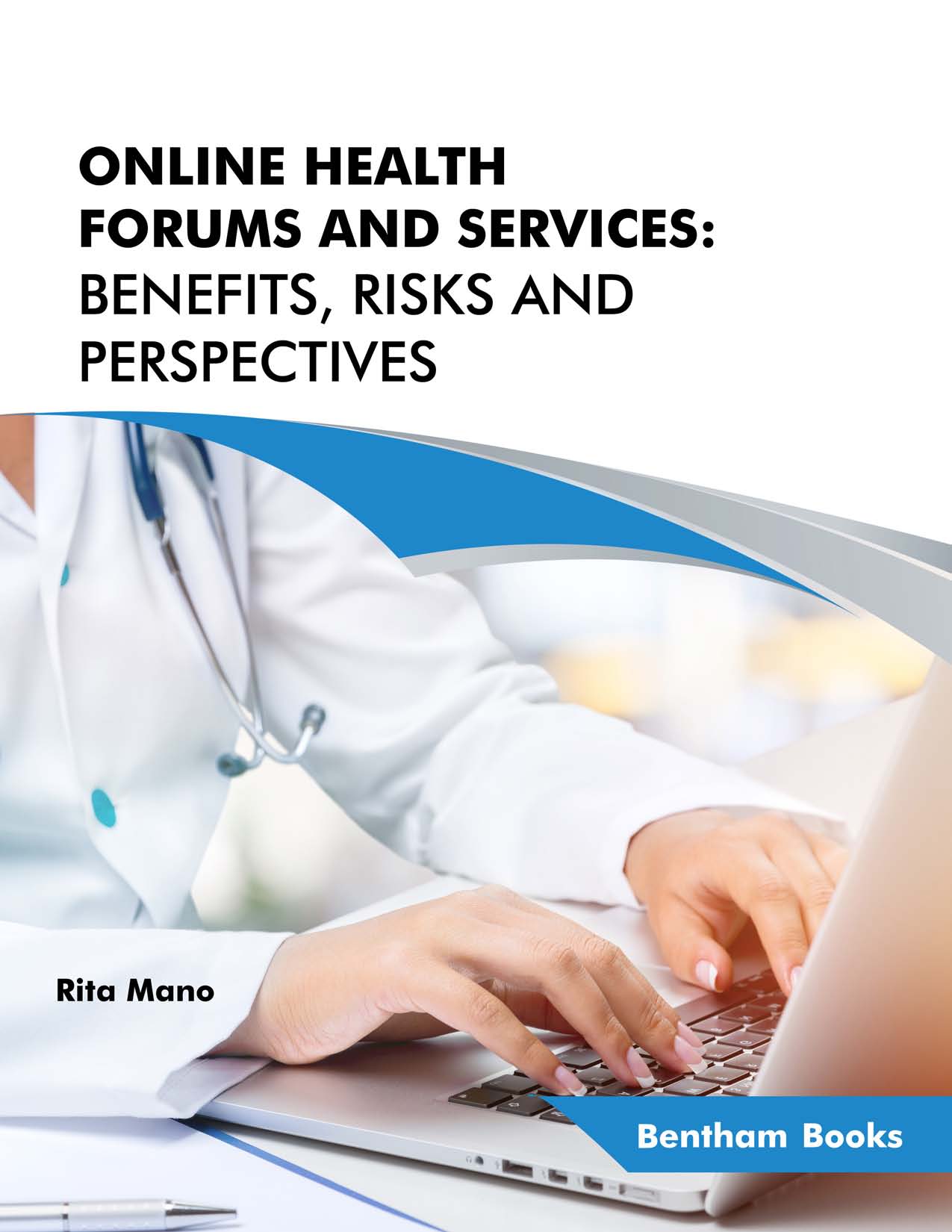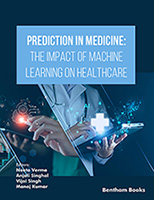A turning point to better health care includes the introduction of the Internet as a media source. Online access to health information and communication about health is associated with improved knowledge about health issues. Individuals in the past obtained information mainly through health professionals, their friends and families. They are now turning to virtual sources of information and social media to gather health information. They do so for a variety of reasons, including identifying symptoms of a health ailment and self-diagnosis, collecting knowledge on available treatment strategies and their effectiveness, evaluating the costs involved, and finding coping strategies for better self-management.
Individuals are becoming more aware and interested in adopting health changes in dietary and wellbeing routines. 61% of U.S. adults look online for health information, and the number of people using the Internet has almost tripled between 2011 and 2018, and more than 50% of users today look for online health information (Seth & Grant Harrington, 2018). Another recent survey indicates that 65% of online adults in the United States, or half of all US adults, use social media, with Facebook and Twitter being the most widely used (Madden & Zickuhr, 2017). Each minute, 695 000 Facebook statuses are updated, and 98,000 tweets are sent (Teiman, 2019). The use of online social media and online health forums for information seeking is especially noted when individuals face a serious health issue (Pew Research Center, 2013). “Dr. Google” has indeed become a favorite choice when seeking information from a virtual health center and was soon followed by the increase in the use of networking sites (Rosenberg et al., 2017).
Following the rise of internet use, the phenomenon of digital health, including electronic health and mobile health, has risen as well. Using the web to access information and communication with peers can help individuals fulfill unmet informational needs and prepare them to consider changes in health habits. This is more likely for individuals who perceive the need for changing unhealthy habits to improve their health status when exposed to online information. In that sense, exposure to online health information through browsing and online communication might increase the likelihood of making a change in health habits empowering individuals to take responsibility for their health status (Lustria et al., 2011; Pena-Purcell, 2008; Mano, 2018).
The health empowerment process involves the understanding that some means are better facilitators towards the desired health end. When individuals recognize their right to express aspirations and are able to define them as an outcome, they develop a critical “consciousness” of the existing situation. This consciousness increases their sense of self-efficacy (Bandura, 1997) and contributes to a healthy lifestyle throughout an individual’s life span. The health empowerment process is possible by introducing, adjusting, and developing services that are easily accessed, regardless of lack of technical skills and basic health literacy (Mesch et al., 2012; Mano, 2016; 2019) and is expanding among different social groups (Kummervold et al., 2008; Wessels, 2013) shaped by individuals’ health expectations and health attitudes. While technology plays a central role in health empowerment, knowledge alone cannot guarantee the adoption of healthy behaviors (Iverson et al.,2008; Shim et al., 2006; Eisenberg & Berkowitz, 2009). Neither the access nor the use of the Internet is similar for all individuals in all social groups (Mano, 2017; 2019; Rosenberg et al., 2020). As a result, health institutions and policy-makers encourage the development of services and programs that enable individuals to endorse the health empowerment process and assume responsibility for their own health needs, diagnosis, and treatment.
eHealth and mHealth technologies have enormous potential advancing health information exchange and improving healthcare access and public as well as personalized medicine (Bashshur and Shannon 2009; Wentzer and Bygholm 2013). The World Health Organization (WHO) and the International Telecommunication Union (ITU) defined the term “eHealth” as the field “concerned with improving the flow of information, through electronic means, to support the delivery of health services and the management of health systems” (p.1, World Health Organization, 2012c). A new definition shows that the World Health Organization (WHO; 2016) has defined Electronic Health (eHealth) as: “the cost-effective and secure use of information and communications technologies in support of health and health-related fields, including healthcare services, health surveillance, health literature, health education, knowledge, and research.” WHO defined Mobile Health (mHealth) as: “mobile computing, medical sensor, and communications technologies for health care” (WHO, 2009). mHealth is also defined as the use of portable devices to deliver medical and public health services and is a subset of eHealth (Betjeman et al., 2013; Wittet, 2012). Both phenomena are related to the commitment of individuals and health care providers to enhance healthcare and health management practices and form the basis of the health empowerment phenomenon which became a major theme in health-oriented western societies (Sillence et al., 2007; Andreassen, et al., 2007) often considered as the “holy grail of health promotion” (Rissel, 1994).
Health consumers arriving at the health provider with the information they found on the web, with a preconceived idea about their diagnosis, want to actively participate in therapeutic decisions relying on misleading or misinterpreted health information. Health institutions and health policy-makers prompt individuals to claim more responsibility, and they have eagerly employed technology to provide more effective and efficient services in order to handle health budgets in order to successfully combine between effective and efficient administration of virtual health devices (Aceijas, 2011; Mattke et al., 2012; Balatsoukas et al., 2015). These systems play a critical part in unifying communications, allowing people to access, process, store, and transmit data through fully integrated audiovisual, data communications, and electronic systems (Henriquez-Camacho et al.,2014). This means that the potential of social media to reach a large segment of the younger as well as the adult population searching for online insights to their health concerns. These systems seek to minimize digital divide effects and increase health literacy (Wessels, 2013) by introducing macro level systems based on online Information and communication technology (ICT).
At the same time, the empowered “Information control” process challenges the institutional health care provider into equality-based roles with patients. These challenges first and foremost included the outcomes of the shift in the “Information control” process from the authority of the institutional healthcare provider into the power of the informed individuals facing situations hardships in health. The empowered “Information control” process challenges the institutional health care provider into equality like roles with patients. In this process questions about differences in health attitudes and health behavior rise because knowledge alone cannot guarantee the adoption of healthy behaviors (Iverson et al., 2008; Shim et al., 2006; Eisenberg & Berkowitz, 2009).
Moreover, despite major investment in the development and introduction of advanced digital health services and programs, also seeking to reduce costs, health literacy is still low and access to online health services limited increasing doubts about the level of equality among socio economic groups. Even today the Internet is not accessible or used with similar levels of knowledge and skills in particular among the disadvantaged who need it most (Mattke et al., 2012; Baran & Davis, 2009; Eisenberg & Berkowitz, 2009; Aceijas, 2011; Mano, 2016). Disadvantaged groups in terms of technology skills and/or access to online health information and services may ignore health issues, they do not ask for help and support, and have little motivation to deal with prevention of illness. The phenomenon of first and second-level effects of the digital divide is therefore discussed more often because they can affect health management and perhaps even life expectancy (Renahy et al., 2008; Lorence et al., 2006; Mesch et al. 2012; Rosenberg et al., 2019). They terms describe lower investment in improved health whether or not they access online health services and the existence of mistrust (Gibbons, 2008; Mesch et al.,2012; Rosenberg et al., 2019). As a result, health empowerment and successful self-management practices among those who need it most - the elderly, those located in remote geographic areas, and/or facing chronic illness and disabilities maybe missed (Hadwich et al., 2006; Eisenberg & Berkowitz, 2009; Aceijas, 2011; Mano, 2016). This is why it is important to consider the sources of individual level variations in the health empowerment process including health attitudes, differences between health behaviors, trust and technology skills (Mano, 2019). The gap between the willingness and actual behavior to adopt digital services have profound impact for different sectors and they may affect decision making and allocation of resources to the online tools used by institutional health providers that manifest in the delivery of health services and health programs.
The purpose of this book is to provide the theoretical and empirical background to instigate an interdisciplinary perspective to issues of digital health in the 21st century.
In order to so, we discuss the factors associated with the use of online sources of health. The fundamental assumptions of this book refer to three dimensions of use of online forums for health purpose: first, at the micro level health attitudes and behaviors reflect a wide range of personal differences in terms of socioeconomic characteristics, technology skills, and preferences. Second, we refer to the quality of these sources of information regarding their suitability and accuracy is limited raising concerns about its usefulness to patients (Manchaiah et al., 2020) raising doubts about the effectiveness of the health empowerment process. Third, we will discuss how variations at the individual level affect both the access and extent of use of virtual sources of health information and health services. Finally, we will present the basic problems associated with the use of virtual sources of health information and services at the level of institutional health practices and the association between the micro-level use of the Internet for health purposes and macro level challenges in the promotion of virtual sources of health products and health services.
We seek to present a comprehensive perspective that link between the aspects of the micro-level use of the Internet for health purposes (accessing health related websites, participation in health forums, bulletin boards and health related social networking sites) and the macro level practices of digital health that promote health empowerment. We also seek to identify the social and health characteristics of the different groups of patients and estimate to what extent individuals in need of health and medical information (chronic illness) are taking advantage of the availability of information and communication platforms to improve their health or are being left behind. More specifically, we intend to seek the differences in health outcomes -access to quantity and quality of health information, involvement in decision making empowerment in health behavior and health changes. In doing so, we refer to the following aspects of health:
-
access to online health information
-
use of online health services
-
social media and participation online health forums
-
mobile health applications and health risks
-
lifestyle health behaviors
-
self-management of health
-
digital divides in health
-
health systems
Due to its interdisciplinary nature, this book is a valuable source of empirical evidence information and theoretical contribution for an academic audience including students and researchers- as well as for public health practice institutions and policy makers. This is also a valuable source of those working in the field of health for the general public who have become very much health-aware these recent years since the internet has allowed for a great number of individuals a quick and immediate access to health information. Finally, the book enables a wide-audience friendly approach to issues of health to be used in connection with teaching, training and consulting activity in digital health. As the importance of particular and general concerns increases among the public, affecting current health policies, so does the importance of understanding the patterns of access and use of online platforms. After all, knowledge and information alone cannot guarantee the adoption of healthy behaviors (Iverson et al., 2008; Eisenberg & Berkowitz, 2009).
CONSENT FOR PUBLICATION
Not applicable
CONFLICT OF INTEREST
The authors declare no conflict of interest, financial or otherwise.
ACKNOWLEDGEMENTS
Declared none.
Rita Mano
Department of Human Services
University of Haifa
Haifa, 3498838
Israel





